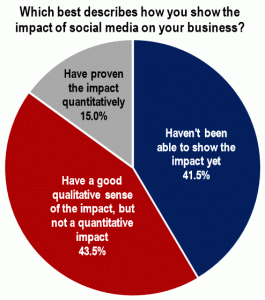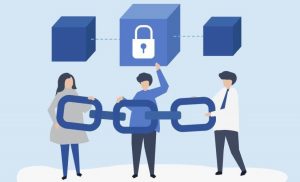
Image Courtesy of Wiki Commons
If you’re a digitally minded person, chances are you’re aware of LinkedIn being the social network of choice when it comes to working professionals seeking connections. Most of the serious business workforce, and not just tech-savvy business professionals, have profiles on LinkedIn. Whether using computers or mobile devices, we tend to be well-connected via most social networks.
Increasingly, businesses are moving into the social media arena, realizing that even if they’re late to the party, it’s in their best interests to take advantage of the wealth of free exposure a network like LinkedIn has to offer. It’s a no-brainer.
LinkedIn offers a fairly astonishing connectivity platform and with numerous benefits. These include B2B Networking, B2C Networking, Staffing, Lead Generation, Customer Satisfaction Surveys and for those in search of a job, an extensive networking platform, often leading right to the door of recruiters on the hunt for fresh meat.
So far, so good…until now.
Read All About It
A few days ago, author Crystal Theis wrote a caustic article about a starling LinkedIn development and published it on LinkedIn Pulse (now that’s what I call Chutzpah!). It really caught my attention.
Like most people, I value the ability to send messages to group members with whom I’m not connected. I (and many others) totally agree with Theis that this is one of the most—if not the most—powerful free service offered since the inception of LinkedIn Groups. It’s always been available to those who pay for subscriptions and those who don’t. Fair game…until now.
For several months now, active LinkedIn group members found quite suddenly and without notice, that they were unable to send such messages. Not long afterwards, people began to reach out to LinkedIn’s help forum in droves. As Theis discovered, whether you were free or premium, everyone was having the same issue…”and those paying were extra specially perturbed.”
Amazingly, it took two months for the people at LinkedIn to provide a firm response—they’re limiting the number of group member to group member messages that anyone can send to 15 per month. Hmm…
Will This Really Work for LinkedIn?
LinkedIn claims the reason is because people have abused this feature. That may be so—but where’s the logic in “punishing” everyone? Surely it makes more sense simply to ban the abusers from using it.
True, there are quite a few people who dislike getting messages from those they are not connected to, but as Linked In’s own poll shows, a fair majority don’t mind so long as the person is contacting them with something that is potentially relevant to their needs.

LinkedIn Poll
As Theis pointed out, most of the annoyances come from people and companies who are using these sales or promotional messages in the wrong way (read her article to understand why). So what is really behind all of this?
Theis has an opinion that perhaps comes closer to the truth— “it has to do with getting more people to upgrade to premium and to propel companies to use sponsored InMail messages to have LinkedIn deliver this promotional information.” That makes much more sense. Money drives their business like any other. But I disagree with their strategy for multiple reasons:
- Instead of offering further incentives to upgrade, from my perspective they’re using “business bully tactics”. This is similar to how Facebook has often made changes, such as allowing wholesale access to people’s personal information (how do you suppose we get the “benefits” of targeted ads?), without first taking the time to discover what people want from that platform and how they feel about it. Perhaps LinkedIn assumes this will weed out the smaller businesses? One would like to think not.
- Even some of the best companies have people who are less than skillful in how they communicate with others—most certainly in the digital world. I used to work with a PR guru on occasion, having written half a dozen or so articles under her byline. Unfortunately, while she’s a fabulous person and terrific at PR, her management and leadership skills were sorely lacking, the result being that quite a few of her people and her contacts were anything but tactful and careful—and they were supposed be PR savvy. Moreover, they had little to no concern of the damage they caused to others with their recklessness. With this kind of poor leadership permeating many companies, I just wonder how smart this move really is…time will tell.
- Although this move has the benefit of making us choosier as to whom we message, it’s just possible it may backfire over time. “If you can only message people you’re connected to and you want to message a lot of people,” wrote Theis, “then you’ll need to connect to lots of people. LinkedIn is pushing people to act contrary to their own philosophy of connecting only to people with whom you have a relationship.” Well said and spot on. The whole point of Linked In is to build relationships. Does this mean LinkedIn only wants people to build relationships from other relationships? That seems awfully counter-intuitive to me.
- Lastly, it appears to me that every time a company starts to use these kinds of “business bully tactics,” it often opens the door to friendlier competition. I can’t help but remember what happened to My Space vs Facebook when My Space began to behave erratically. Perhaps it’s time for another social media brand to link us in?
What do you think? Will your business be affected by this?
(248)









